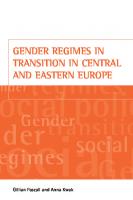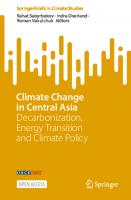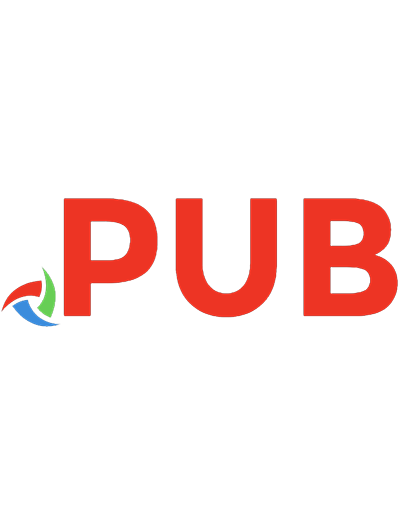Tourism in Transition: Economic Change in Central Europe 9780755620890, 9781860645785, 9781860645792
Since 1989, Central and Eastern European economies have undergone a transition from highly centralized state socialism t
144 93 32MB
Chinese Pages [278] Year 2000
Polecaj historie
Citation preview
TOURISM IN TRANSITION
Netherlands Czech Republic former USSR Austria Poland Germany Hungary Domestic
Fig. 3.2: Nights spent in the Slovak Republic, 1990-97: countries of origin. Source: Statistick9 urad Slovenskej republiky (1991-1998b).
Union citizens to obtain permission for individual international travel even to other countries within the Eastern block. Most of the relatively small number of incoming Soviet tourists, therefore, came on travel agency packages. Consequently, the removal of barriers to individual travel stimulated an influx of Ukrainians and Russians. Most of this travel was for shopping, smuggling, job-seeking and other shadow economy activities. A weak business infrastructure in the Ukraine also meant that many Ukrainians lacked access to sophisticated travel agency services in their own country, and instead travelled to Slovakia to purchase these. Only indirect data is available on this phenomenon, but it seems conclusive: 38,707 out of a total of 217,578 outbound packages sold in Slovakia in 1995 were sold to foreigners, of which 33,389 were in the City of KoSice, located close to the Ukrainian border. Ironically, this was similar to the pattern of outbound tourism from Czechoslovakia after the opening of the Austrian borders in 1989. Many of the Czech and Slovak 'tourists' who went to Austria in 1989 and 1990 were engaged in shopping or business tourism, or in shadow economy activities. However, there is also a new elite in the former USSR which has rediscovered the High Tatras mountain resorts and the PieSt'any spa; again there are parallels with the many wealthy Czechs and Slovaks who have rediscovered the Austrian Alps since 1989. A decrease in the nights spent by Czech tourists in Slovakia was expected after the 'velvet divorce' in 1993. But language compatibility, familiarity (a tradition of visiting Slovak resorts since 1918) and low prices have attracted increasing numbers of Czechs. This is evidence of the importance of path dependency in international tourism flows in Slovakia, as in the Czech
TOURISM IN TRANSITION
3.5 CONCLUSIONS: THE ROLE OF INTERNATIONALIZATION 1989 was a milestone in tourist flows to and from the Czech and Slovak Republics, and the ensuing transformation has seen a significant reinternationalization of their inbound and outbound markets. There was a degree of continuity and path dependency for the main generating countries and destinations generally remained the same before and after 1989 (German!, Poland, I Iungar! , Austria). However, the scale of international tourism changed fundamentally: the numbers of incoming tourists increased four-fold and outgoing tourists eight-fold. This was reflected in rapid growth of international tourism receipts and expenditure. The main increases were in the period 1990-4, and the scale of visitor flows has subsequentl! stabilized. The analysis of the international tourism statistics has identified some common but also some different trends in tourist flows to the two Republics: There were significant increases in business and VFR-related travel. While the former was linked to the transformation to market economies, the latter was partly enhanced by the 'velvet divorce' of 1993, when many friendship and family networks were divided by the new Czech-Slovak border. The increases in business and VFR-related travel were also stimulated by the boom in the CEFTA economies after 1993 (see Chapter 2) and improved living standards in Central Europe in the second part of the transition (see Williams and Balai 1999). Shopping tourism, resulting from price differences in the Czech and Slovak Republics on the one hand, and Germany and Austria on the other, has also been an important component of the reinternationalization of tourism since 1989. In contrast, transit travel has decreased in relative importance, especially in the Czech Republic, as other forms of tourism have expanded more rapidly. While the general motives for incoming travel differed little in the two Republics (in terms of the importance of recreation, business, shopping, and VFR), their tourist images were very different. In the Czech Republic the 'tourist gaze' (Urry 1990) was organized around the attractions of Prague, pleasant rural landscapes and a lively culture, w-hile Slovakia was considered a tourism arena for outdoor activities. The stronger tourism image of the Czech Republic has allowed it to attract more foreign visitors from more distant European, American and Asian markets than has Slovakia. The Czech and Slovak tourism marketing agencies seem to have had limited effectiveness. Most tourists continued to source their travel information from friends and relatives, or from brochures and articles, and advertisements by tour companies and travel agents. Few foreign tourists were directly engaged by the agencies' marketing activities.
TOURISM IN TRANSITION
T ~ H I4.5 , E Cup~citiesund pe~fhrmuncein the Czechoslooak tourism tndustry in 1989 Number of establishments
Beds
Visitors
Occupancy rates, O/o
Czech Republic' Commercial sector Spas Trade-union hotels Tourism units of non-tourism bodies
2,863 n.a.
158,288 34,781
7,434,371 459,593
50.5 88.7
75
10,621
519,818
84.7
10,625
264,539
2,833,750
21.9
Slovak Republic2 Commercial sector Spas Trade-union hotels Tourism units of non-tourism bodies
988 n.a.
66,118 10,989
3,849,204 153,216
47.3 93.5
22
3,988
198,251
86.7
3.147
61,792
592,031
17.6
Sources: 1 = Federalni statistickj. uiad (198&1993a), 2 = Ministerstvo obchodu a cestovn6ho ruchu Slovenskej republiky (1990). Notes: figures for the commercial sector, spas and trade-union hotels are for 1989; figures for non-tourist bodies are for 1985.
receipts which were a national economic priority. In addition, income from privatization would strengthen the state budget. There were also strategic reasons for tourism privatization: to promote a private sector and to create a new entrepreneur class. The tourism industry was ideal for this purpose, because of potentially strong demand conditions in that sector, and the relatively low prices of the units to be privatized.
4.3.2 Privatization and tourism: timetable and methods A standardized privatization approach to the sector was not possible, given the variety of ownership forms involved. For example, the j'cdnota - the consumer co-operative chains of restaurants and hotels - was recognized as a private sector body, exempted from privatization, and remained in co-operative ownership. The trade-unions also rejected attempts to privatize their hotels, which included some of the largest and best-organized hotel chains in the two Republics. Non-profit associations (Socialist Youth and Agriculture Co-operatives) have been transformed but still retain most of
TOURISM IN TRANSITION ANNEX 11:
Changes in the regional distribution qf'tnurist nights in Sboakiu in 1989-96 (percentufe clirtributton) Nights spent by domestic tourists
District
1989
1993
1996
Banska Bystrica Hardejov Bratislava City Bratislava District ~adca Dolng Kubin Dunajska Streda Galanta Humennk Komarno KoSice City KoSice District Levice 1.iptovskj. Mikulad LuEenec Martin Michalovce Nitra NovC. Zimky Poprad Povaiska Bystrica PreSov Prievidza Rimavski Sobota Roinava Senica SpiSska nova Ves Stara L.'ubovna Svidnik Topol'Eany Trebidov Trentin Trnava Vel'kg KrtiS Vranov nad Topl'ou Zvolen iiar iilina Slovak Republic Source: statistickg "rad Slovenskej republiky (1991-1998a).
247
Nights spent by foreign tourists 1989
1993
1996



![Communities in Transition: Protected Nature and Local People in Eastern and Central Europe : Protected Nature and Local People in Eastern and Central Europe [1 ed.]
9781409448518, 9781409448501](https://dokumen.pub/img/200x200/communities-in-transition-protected-nature-and-local-people-in-eastern-and-central-europe-protected-nature-and-local-people-in-eastern-and-central-europe-1nbsped-9781409448518-9781409448501.jpg)




![Climate Change and Cultural Transition in Europe [1 ed.]
9789004356825, 9789004356429](https://dokumen.pub/img/200x200/climate-change-and-cultural-transition-in-europe-1nbsped-9789004356825-9789004356429.jpg)

